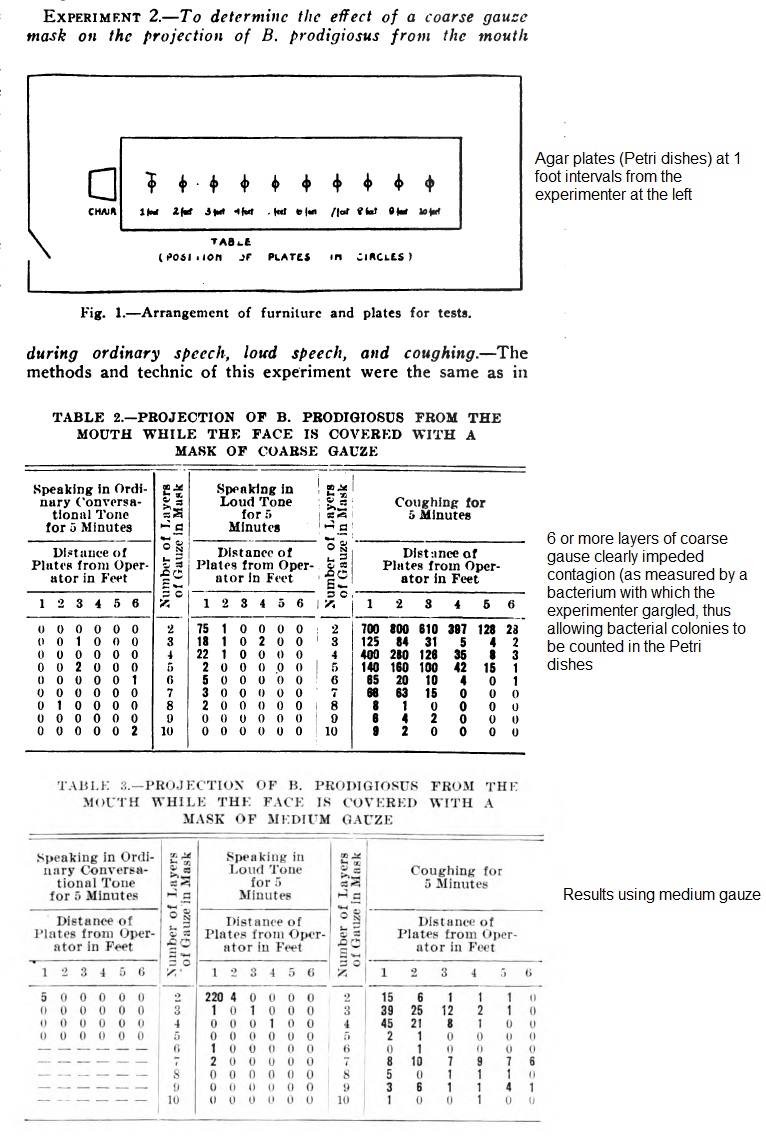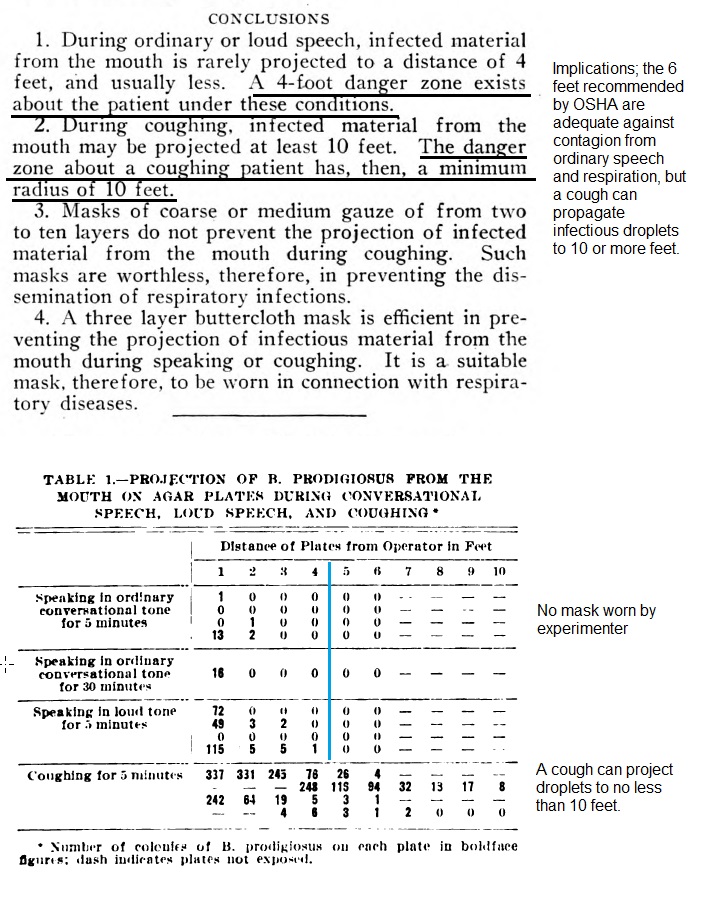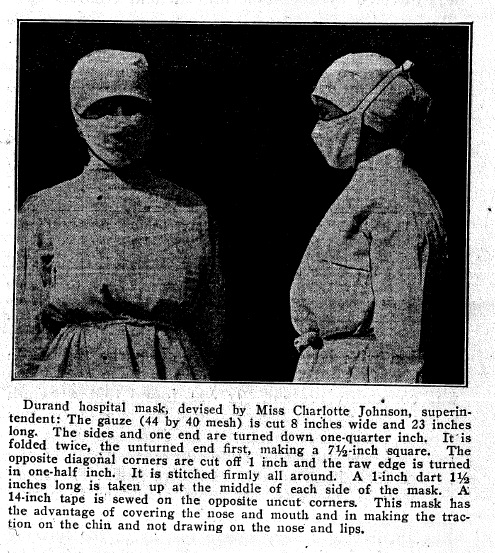The World Health Organization is still trying to make up its mind about this (per what appears to be the most recent guidance issued in June 2020): “At the present time, the widespread use of masks by healthy people in the community setting is not yet supported by high quality or direct scientific evidence and there are potential benefits and harms to consider (see below).” While people should heed WHO’s warnings about, for example, self-contamination from touching the front of the mask, the so-called disadvantage “potential discomfort” has never been an excuse for not using personal protective equipment (PPE) and I doubt it ever will be. My experience with a P100 respirator is that, once you get used to it, you no longer notice it. It is my position (not formal engineering or OH&S advice), based on objective evidence gathered by medical doctors and other authoritative sources, that face masks offer at least some protection to the wearer from airborne contagion and others if the wearer is himself or herself infected.
(Wall Street Journal, registration may be required) Face Masks Really Do Matter. The Scientific Evidence Is Growing.
They actually figured this out in 1918 as shown by FACE MASKS IN INFECTIONS OF THE RESPIRATORY TRACT* by BREWSTER C. DOUST, M.D. (Syracuse., N. Y.) Captain. M. C, U. S. Army AND ARTHUR BATES LYON. M.D. (Boston) Lieutenant, M. C, U. S. Army. Journal of the American Medical Association, October 12 1918, public domain due to age. The reason 1918 is so important is that the “Spanish Flu,” as it was called simply because Spanish newspapers played a leading role in reporting on it, was ravaging the world and causing millions of deaths, thus creating a strong incentive to do whatever it took to stop it. This “organizational knowledge” (ISO 9001:2015 clause 7.1.6 by the way) seems to have not been used much to deal with the current problem.
Multi-layer gauze masks impeded contagion from the wearer, who gargled with a bacterial solution (thus allowing bacterial colonies to be counted on the Petri dishes in front of the experimenter). While bacteria are larger than viruses, the droplets that carry both should be the same size so the results carry over into influenza which was, in fact, the major concern at the time.

The Doust and Lyon results also show that the 6 feet recommended by OSHA for social distancing should be adequate against contagion from ordinary respiration, but a cough can propagate it for 10 or more feet. If a mask is worn, the pressure drop across the mask is much higher for a cough.

Face Masks Also Protect the Wearer
THE PROTECTIVE QUALITIES OF THE GAUZE FACE MASK EXPERIMENTAL STUDIES DAVID A. HALLER, M.D. (Pocahontas, Va.) Major, M. R. C, U. S. Army AND RAYMOND C. COLWELL First Lieutenant, S. C, N. A. CAMP GRANT, R0CKF0RD, ILL. (Journal of the American Medical Association, 1918, public domain due to age) says
“The use of the face mask by surgeons and their assistants to protect clean operative fields which they otherwise would spray with their own mouth organisms at every cough or sneeze is an old and well established procedure. The utilization of the face mask to protect the wearer from droplet infection in the presence of those ill with acute infectious diseases is likewise now a well established custom owing in large part to the careful studies at the Durand Hospital in Chicago. Weaver has shown its efficacy when used in this institution in protecting attendants on infectious disease cases both from contracting these diseases and from becoming carriers of them.” Note by the way that they are talking about gauze face masks and not masks made from the superior materials we have available today.
“Our second series of experiments was directed toward a determination of how many superimposed layers of gauze are necessary to protect when applied over the face of the uninfected, rather than over the mouth of the infected. To represent the recipient, a Petri dish was masked and coughed at from a distance of from 12 to 14 inches with no mask over the face of the subject. One feature entirely neglected in this experiment which is present in the actual clinical test of the mask is the inspiratory suction through the mask. The same series of masks were used although only one quality of gauze was completely worked out. This was the Lakeside (24 by 20). Five layers were necessary to protect the plate completely, which amount represents 220 strands of cotton fiber to the square inch.” (Modern testing systems, e.g. for surgical face masks, do simulate inhalation.)
“It can be shown that the mask over the face of the infected is of value in the prevention of the uninfected when used in addition to the mask over the plate which represents the uninfected” which supports the position “My mask protects you and your mask protects me,” but this experiment also showed that the mask protects the wearer as well.
Further Experience with Face Masks, George H. Weaver, The Journal of the American Medical Association October 26, 1918, p. 1405 – 1407 looks interesting. Note that the Durand mask, as invented in 1918, is superior in terms of nose and mouth coverage, i.e. preventing leakage around the sides, than the earloop masks that are popular today.
